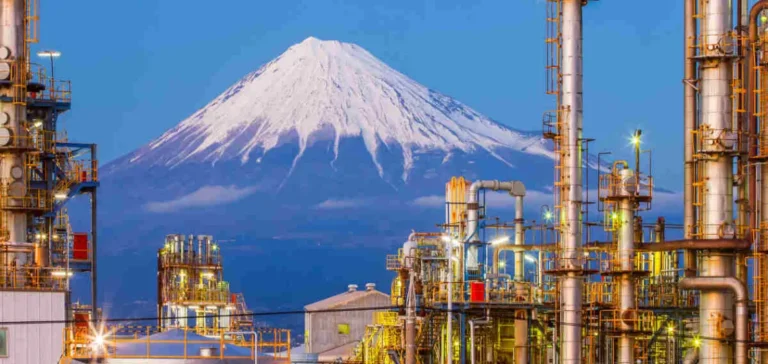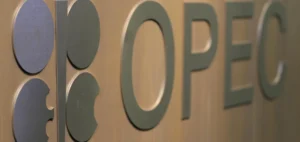Japanese refiners received their Middle Eastern crude oil cargoes loaded in June without major incident, despite clashes between Israel and Iran last month. Supply managers at three major refiners, including ENEOS and Taiyo Oil, confirmed that only a few Suezmax and VLCC tankers experienced delays of 15 to 40 hours from their initial schedules. This apparent normalcy, however, masks a concerning reality: Japan imported 2.299 million barrels per day of Middle Eastern crude in the first half of 2025, representing over 95% of its total imports of 2.415 million barrels per day, according to data from the Ministry of Economy, Trade and Industry (METI).
Strategic vulnerability to Strait of Hormuz risks
This extreme dependency occurs in an explosive geopolitical context. The Strait of Hormuz, through which 20.9 million barrels per day transit representing 20% of global oil consumption, remains under threat of major disruptions. JP Morgan analysts warn that a prolonged closure could propel Brent prices beyond 120 dollars per barrel, particularly as only 4.2 million barrels per day can be redirected via alternative land routes. Maritime insurance premiums have already jumped 55% on Middle Eastern routes, while maritime authorities report increasing electronic interference near the Iranian port of Bandar Abbas.
Japan certainly has substantial strategic reserves totaling 583 million barrels, equivalent to 224 days of consumption. Government stocks of 324 million barrels, managed by the Japan Oil, Gas and Metals National Corporation (JOGMEC), are supplemented by a private storage obligation of 70 days. Agreements with Saudi Aramco, ADNOC and Kuwait Petroleum allow the use of an additional 19.5 million barrels in emergencies. However, some storage facilities lack rapid drawdown infrastructure, limiting their effectiveness in a crisis.
Structural decline of Japanese refining competitiveness
The situation is exacerbated by the structural decline of the Japanese refining sector. With an average Nelson complexity index of only 6 to 8, Japanese refineries lag significantly behind their Asian competitors displaying indices above 10, or even 21.1 for the Indian Jamnagar complex. This low complexity limits their ability to process less expensive heavy crudes and produce high-value fuels, resulting in operational costs 30 to 50% higher than those in China or India.
National refining capacity continues to contract, falling from 3.3 million barrels per day in 2022 to a projected 3 million by the end of 2024. ENEOS closed its 120,000 barrels per day Wakayama facility, while Idemitsu Kosan plans to close its Yamaguchi refinery of equivalent capacity, together representing 7% of national capacity. This contraction reflects domestic demand in structural decline of 2% annually since the peak of 5.7 million barrels per day reached in 1996, fueled by demographic aging with 30% of the population over 65 years old.
Diversification opportunities via Trans Mountain pipeline
The expansion of the Canadian Trans Mountain pipeline offers a glimmer of hope for diversification. Operational since May 2024 with a capacity of 890,000 barrels per day, the pipeline has already attracted major Japanese buyers including ENEOS, GS Caltex and SK Energy. Canadian crude presents a significant economic advantage, trading approximately 10 dollars per barrel below Iraqi Basra Heavy for Asian deliveries. Analysts forecast exports of 350,000 to 400,000 barrels per day to Asian markets, offering a viable alternative to Gulf supplies.
American imports remain marginal at 69,621 barrels per day, despite statements from Petroleum Association of Japan president Shunichi Kito suggesting that a certain percentage of American crude in the mix is feasible. The unfavorable price differential, with American crude at 684 dollars per ton versus 646 dollars on average for Japanese imports, limits the attractiveness of this option. JP Morgan’s outlook anticipating Brent at 66 dollars per barrel in 2025 could however modify this dynamic.
Transformation imperative facing market realities
The implications for market players are profound. Traders must integrate sophisticated geopolitical hedging strategies facing increasing risks on supply routes. Arbitrage between Canadian crudes via TMX and Middle Eastern grades creates new opportunities, while the forward price structure reflects increased uncertainty. Refinery managers face critical investment decisions: modernize to process heavier crudes or accept gradual decline against Asian competition.
Japan’s energy transition toward hydrogen and ammonia, combined with nuclear restart, could reduce oil demand to 2.5 million barrels per day by 2030. This structural evolution does not, however, resolve the country’s immediate vulnerability to its near-total dependence on Middle Eastern supplies. Japanese refiners find themselves at a critical crossroads where source diversification is no longer a strategic option but an existential necessity for national energy security.






















